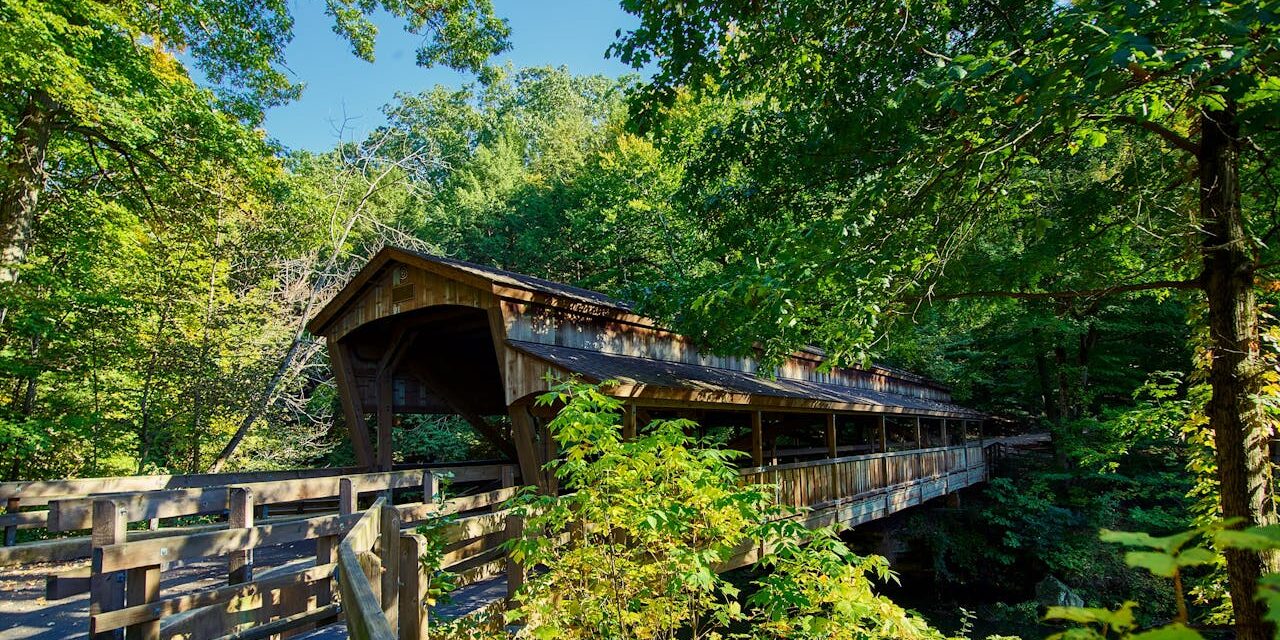Ohio, often referred to as the “Buckeye State,” has a rich history shaped by diverse cultural influences and significant events.
From early Native American inhabitants and European settlement to its pivotal role in American industry and politics, Ohio’s past is integral to understanding its present.
Below, we explore the history of Ohio, highlighting its foundation, major historical events, and notable landmarks.
Table of Contents
Early History
Indigenous Inhabitants and European Exploration
Before European settlers arrived, Ohio was home to various Native American tribes, including the Shawnee, Miami, Wyandot, and Delaware.
- These tribes developed sophisticated societies with established agricultural practices and trade networks.
- European exploration of the area began in the 17th century with French fur traders and missionaries venturing into the region, followed by British explorers.
The indigenous peoples and early European explorers laid the groundwork for future settlements in Ohio.
Colonial and Territorial Periods
Ohio became part of the United States through the Northwest Ordinance of 1787, which organized the Northwest Territory.
- Ohio’s first permanent settlement, Marietta, was founded in 1788.
- The region’s growth was spurred by its fertile land and strategic location along major rivers, attracting settlers from the eastern states.
These developments were crucial in shaping Ohio’s economic and cultural landscape.
Key Historical Events
Statehood and Early Development
Ohio officially became the 17th state of the Union on March 1, 1803.
- Early economic activities included agriculture, with the state becoming a leading producer of crops such as corn and wheat.
Statehood marked a new era of political and economic growth for Ohio.
The Civil War and Industrialization
During the Civil War, Ohio was a crucial Union state, contributing over 300,000 troops to the war effort.
- The state’s strategic location along the Ohio River made it a key site for the Underground Railroad, assisting enslaved people in their quest for freedom.
- Post-war, Ohio rapidly industrialized, becoming a major center for manufacturing, particularly in steel, rubber, and automobiles.
These developments laid the foundation for Ohio’s modern economy.
The Great Depression and Economic Recovery
Ohio, like much of the country, was significantly impacted by the Great Depression, but New Deal programs helped to revitalize its economy.
- Infrastructure projects and federal aid provided jobs and improved public facilities, aiding in the state’s recovery.
These programs facilitated economic recovery and modernization in Ohio.
20th Century Growth and Development
Economic and Social Developments
Throughout the 20th century, Ohio’s economy diversified with growth in manufacturing, aerospace, finance, healthcare, and technology sectors.
- The state also played a significant role in the aerospace industry, with significant contributions from NASA’s Glenn Research Center as well as the Wright-Patterson Air Force Base.
These developments laid the foundation for Ohio’s modern economy.
Cultural Contributions
Ohio is renowned for its contributions to art, literature, and sports.
- The state has produced notable figures such as Thomas Edison, the Wright brothers, and Toni Morrison.
- Ohio is also home to major cultural institutions like the well known Rock and Roll Hall of Fame and the Pro Football Hall of Fame.
Ohio’s cultural contributions have significantly shaped its identity.
Notable Landmarks
The Ohio Statehouse
Completed in 1861, the Ohio Statehouse in Columbus is an architectural masterpiece and a hub of state government.
- The building features a distinctive Greek Revival style and houses the Ohio General Assembly.
The Ohio Statehouse is a symbol of Ohio’s political heritage.
Cuyahoga Valley National Park
This national park offers scenic beauty and recreational opportunities along the Cuyahoga River.
- The park is known for its lush landscapes, historic landmarks, and diverse wildlife.
Cuyahoga Valley National Park highlights Ohio’s natural beauty.
The National Museum of the U.S. Air Force
Located at Wright-Patterson Air Force Base right by Dayton, this museum is the oldest and largest military aviation museum in the world.
- It features extensive exhibits on aviation history and space exploration.
The National Museum of the U.S. Air Force is a testament to Ohio’s contributions to aviation and aerospace.
Governance
State Government
Ohio operates under a constitution adopted in 1851.
- The state government consists of the Executive, Legislative, and Judicial branches.
- The governor, currently Mike DeWine, leads the executive branch.
The state government addresses the needs of Ohio’s diverse population and manages its resources effectively.
Local Government
Ohio’s local government structure includes counties, cities, and towns.
- Each level of government has specific responsibilities for services such as education, public safety, and infrastructure.
- Local governance ensures that the diverse needs of Ohio’s communities are met.
Effective local governance contributes to the overall well-being of the state’s residents.
Demographics and Growth
Population
As of 2023, Ohio’s population was approximately 11.8 million. The state’s demographic makeup reflects its history of immigration and cultural diversity.
Diverse demographics and steady growth reflect Ohio’s appeal as a place to live and work.
Education and Economy
Ohio is home to several prominent educational institutions, including Ohio State University and Case Western Reserve University.
- The state’s economy is diverse, with key sectors including manufacturing, finance, healthcare, and technology.
- Ohio also has a notable agricultural sector, producing crops such as corn and soybeans.
These factors contribute to the state’s economic resilience and cultural vibrancy.
State of Ohio Q&A
Q: When did Ohio become a state?
A: Ohio officially became the 17th state of the Union on March 1, 1803.
Q: Who were the original inhabitants of Ohio?
A: The original inhabitants of Ohio included various Native American tribes like the Shawnee, Miami, Wyandot, and Delaware. These tribes had established societies with rich cultures and trade networks.
Q: What role did Ohio play during the Civil War?
A: Ohio was a crucial Union state during the Civil War, contributing over 300,000 troops. It was also a key site for the Underground Railroad, aiding enslaved people in their escape to freedom.
Q: What are some notable historical landmarks in Ohio?
A: Notable landmarks include the Ohio Statehouse, Cuyahoga Valley National Park, and the National Museum of the U.S. Air Force. These sites highlight Ohio’s political heritage, natural beauty, and contributions to aviation and aerospace.
Q: How is Ohio governed?
A: Ohio operates under a constitution adopted in 1851, with an Executive, Legislative, and Judicial branch. The governor leads the executive branch, and local governance is managed by counties, cities, and towns.
Q: What is the current population of Ohio?
A: As of 2023, Ohio’s population was approximately 11.8 million. The state continues to attract residents with its diverse culture, educational opportunities, and economic resilience.
Ohio’s rich history and commitment to cultural preservation make it a unique and vibrant state. By protecting its historical landmarks and fostering growth across various industries, Ohio honors its past while looking forward to a prosperous future.





